In Windows 8 Microsoft released a feature called InstantGo (formerly know as Connected Standby) which should bring smartphone like Power Management features to your Windows tablet or notebook. Devices such as the Surface Pro 3 do offer this feature. This post should help you troubleshoot issues with InstantGo or Connected Standby.
InstantGo requires the following:
- Windows 8.1 Operating System (In Windows 8 this is called Connected Standby)
- A firmware flag indicating support for the standard
- The boot volume must run on a SSD disk
- Support for NDIS 6.30 by all network devices
- Passive cooling on standby
- Secure Boot
- Memory to be soldered to the motherboard
- The Hyper-V Hypervisor role must be disabled on Windows 8 and Windows 8.1 systems. Windows 10 Hyper-V will allow you to use Hyper-V and InstantGo at the same time.
Check if the hardware supports InstantGo
To check if your hardware supports InstantGo you can run the following command:
powercfg /aInstantGo Issues / Connected Standby Issues
In some case you can run in some issues where you have your battery draining more than expected during the InstantGo or Connected Standby time. This could be of the following reasons:
- Drivers – Make sure you have the latest drivers installed
- Firmware – Make sure you have the latest Firmware (BIOS) installed
- Mails – The Windows communication app keeps the broker infrastructure (BI) system active. BI, in turn, keeps the WLAN network up so that the system stays up-to-date with emails. If you get a lot of emails this can end up in a higher power drain.
- Software – Some installed legacy Software which does not let you go into the InstantGo modus.
- VPN Clients – Some older VPN Clients can also cause issues with InstantGo
- Network Activity – The WLAN device might have a challenging radio environment and the Windows system might not be able to establish a reliable Internet connection. We see how these events affect the WLAN device, which, in turn, impacts the battery.
- Hyper-V – If you run Hyper-V in Windows 8 or Windows 8.1 you can not run InstantGo, this is solved in Windows 10.
Troubleshooting InstantGo / Troubleshooting Connected Standby
To get some more information about your device and InstantGo or Connected Standby you can use the following tools and reports.
powercfg /SleepStudy
The maybe best way to Troubleshoot Connected Standby or InstantGo issues, is to use the powercfg /SleepStudy command. This will generate a Sleep Study report which allows you to analyze different things about Conncted Standby:
Connected Standby / InstantGo Overview
Connected Standby Transitions
Connected Standby Sessions
Here you can analyze which application or driver did use battery resources during the Connected Standby session.
powercfg /batteryreport
With powercfg /batteryreport you can generate a report about how your battery is used.
And you can also see what kind of state drained your battery, if this was an active session or a Connected Standby session.
powercfg /energy
With powercfg /engery you can see not only InstantGo or Connected Standby issues, you can see what other applications, drivers and more does could drain your battery.
I hope this helps you to troubleshoot Connected Standby issues.
Sources
Tags: Battery, Battery Drain, Battery Life, battery report, Client, Connected Standby, Engery report, Hyper-V, InstantGo, Microsoft, Powercfg, SleepStudy, Windows, Windows 10, Windows 8, Windows 8.1 Last modified: January 12, 2015

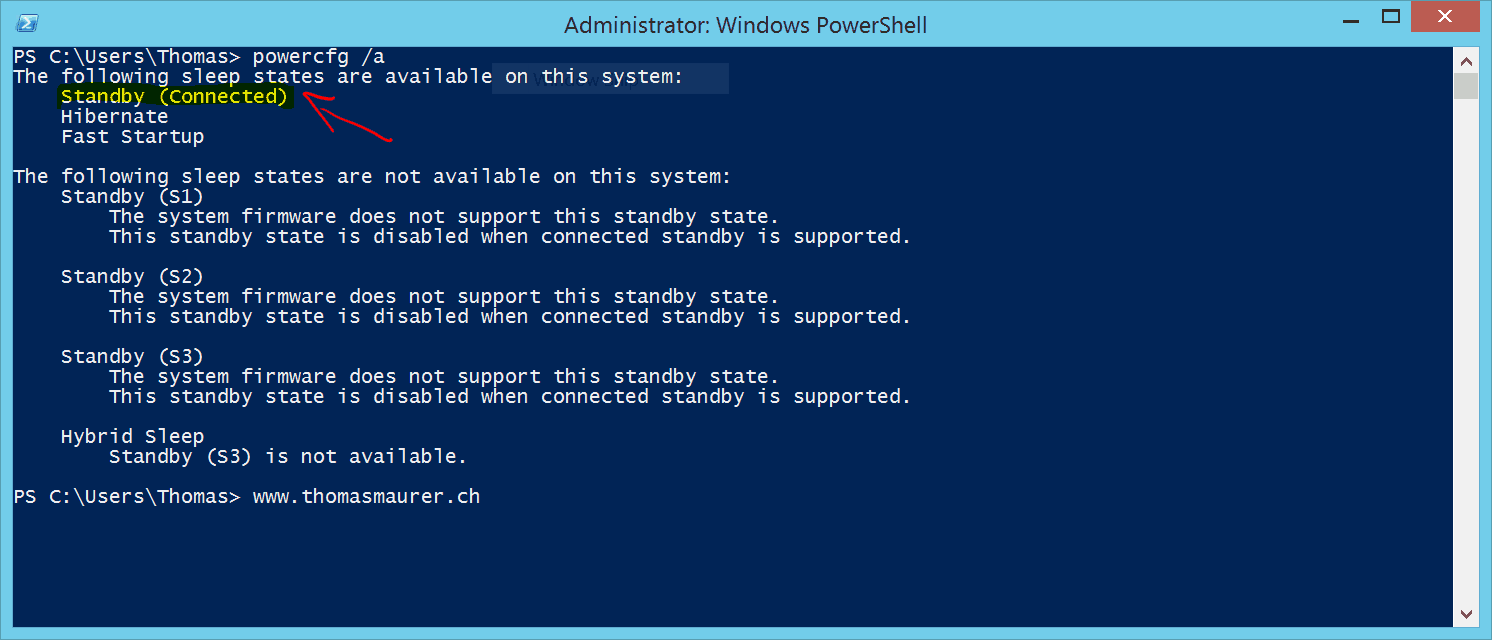
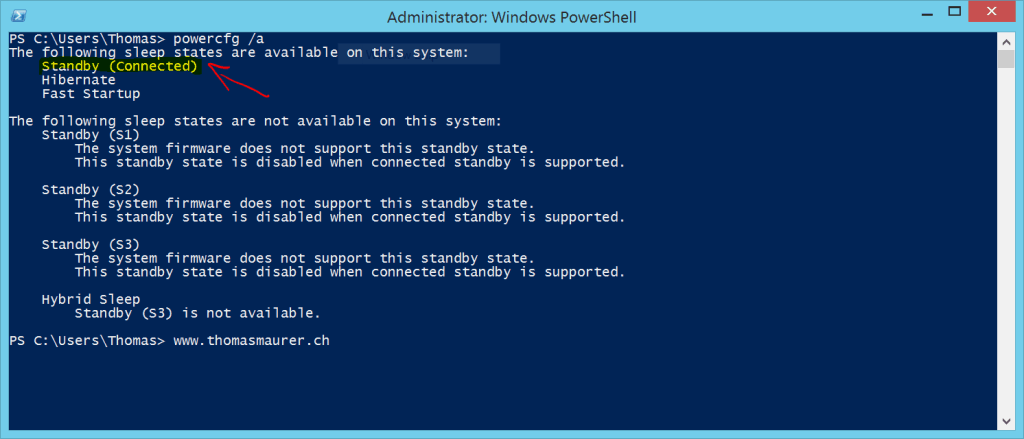

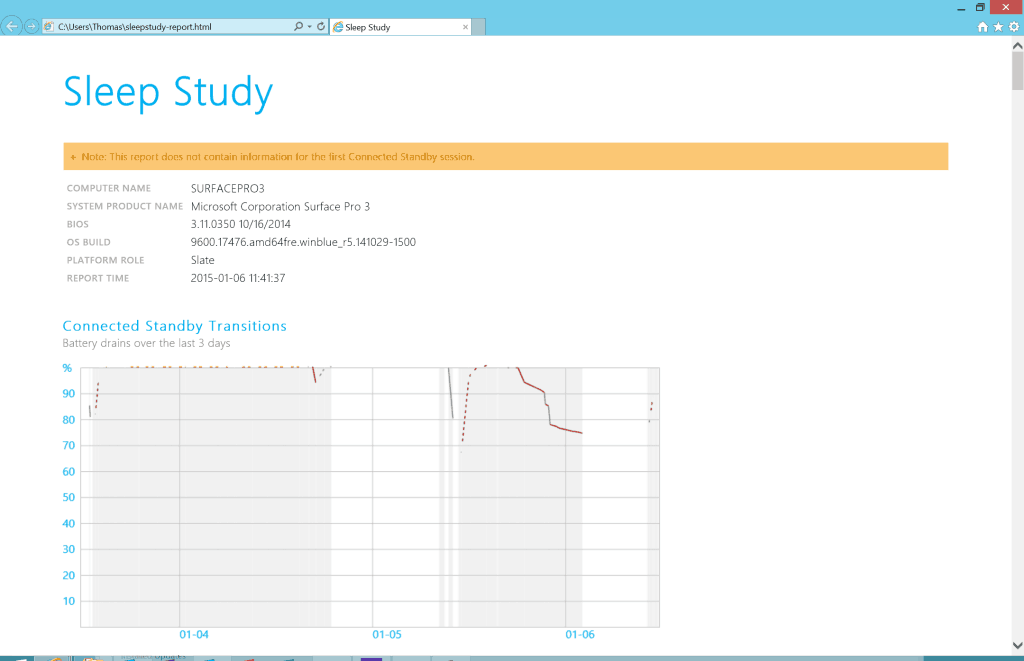
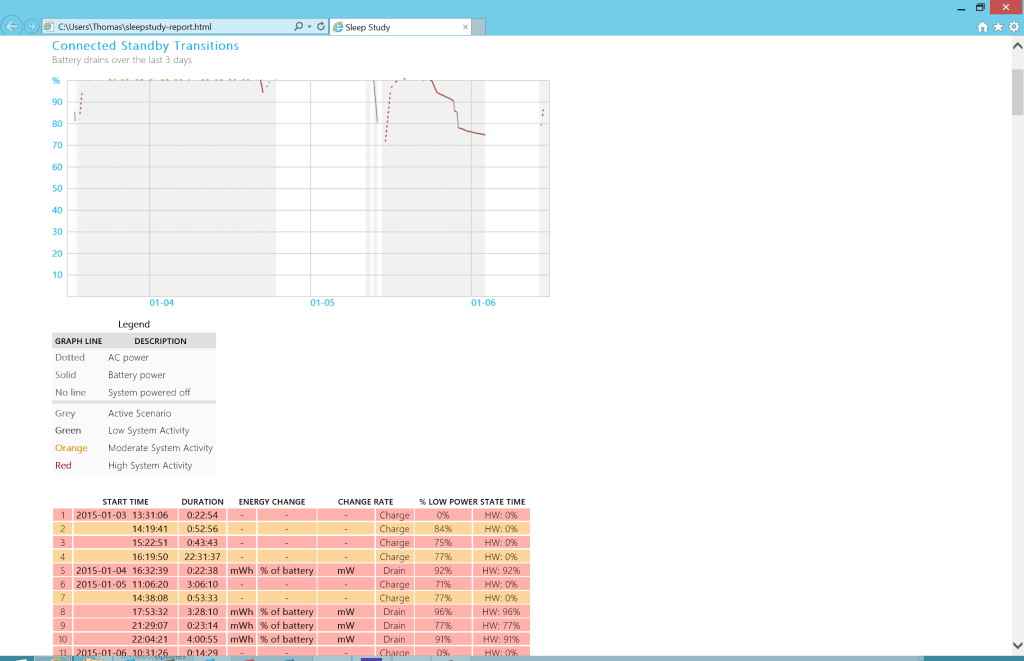
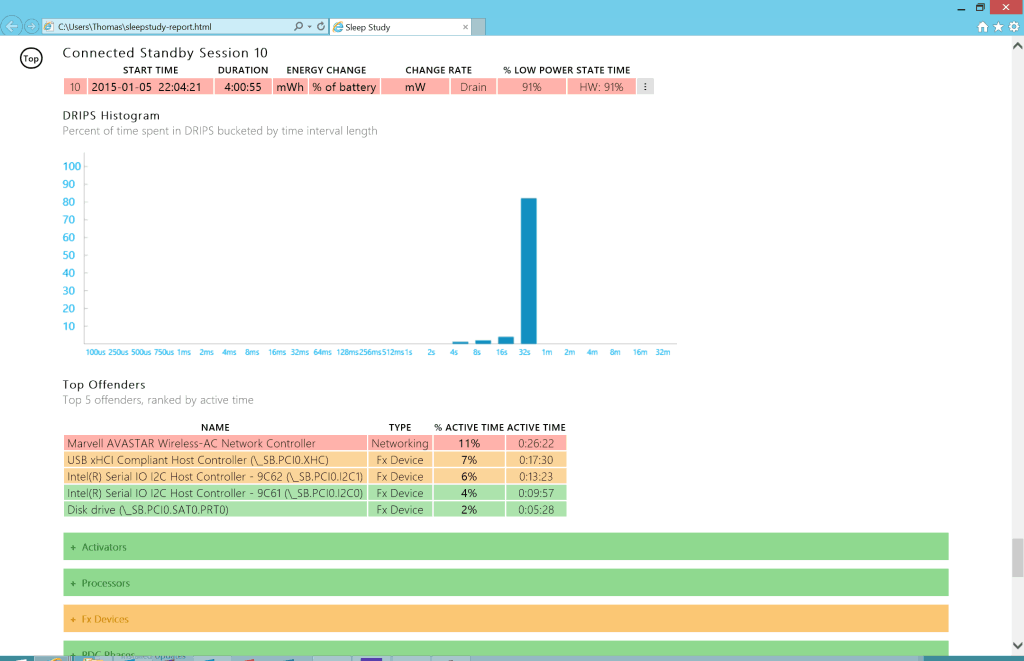

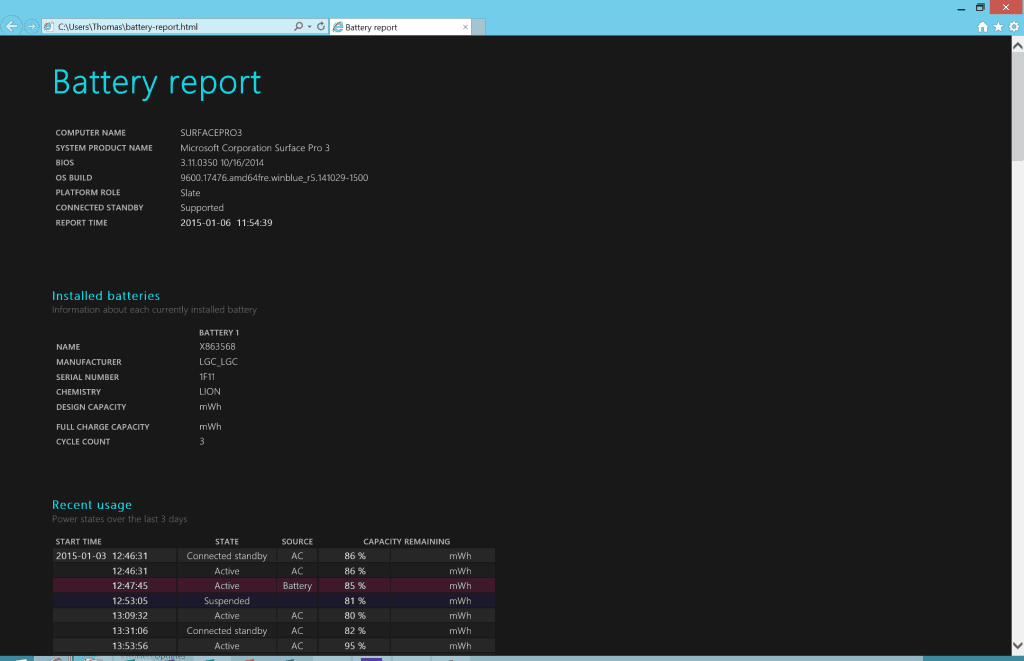
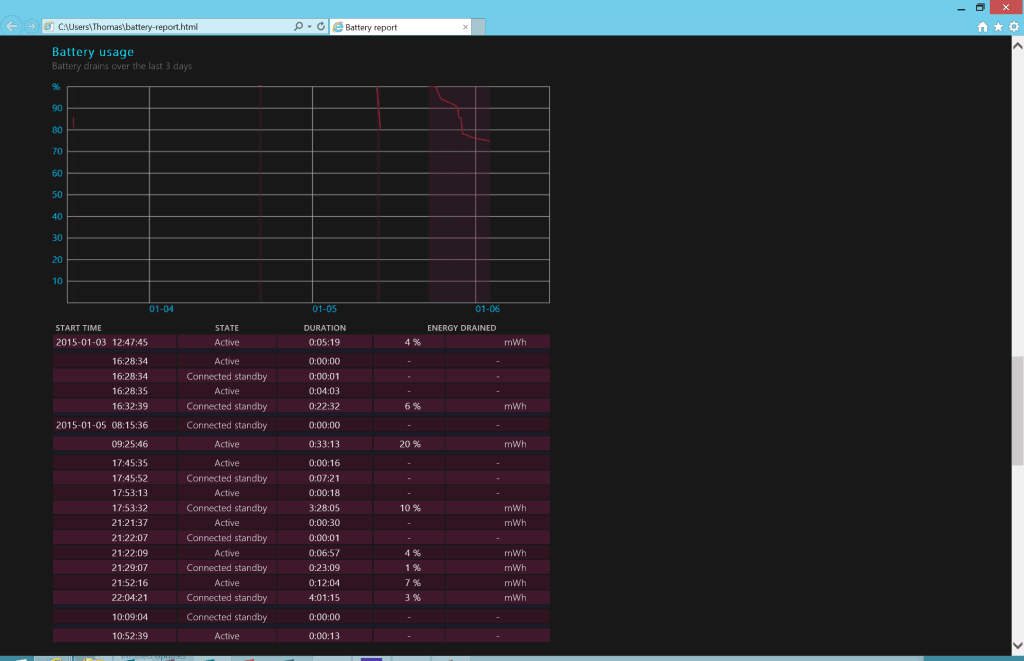
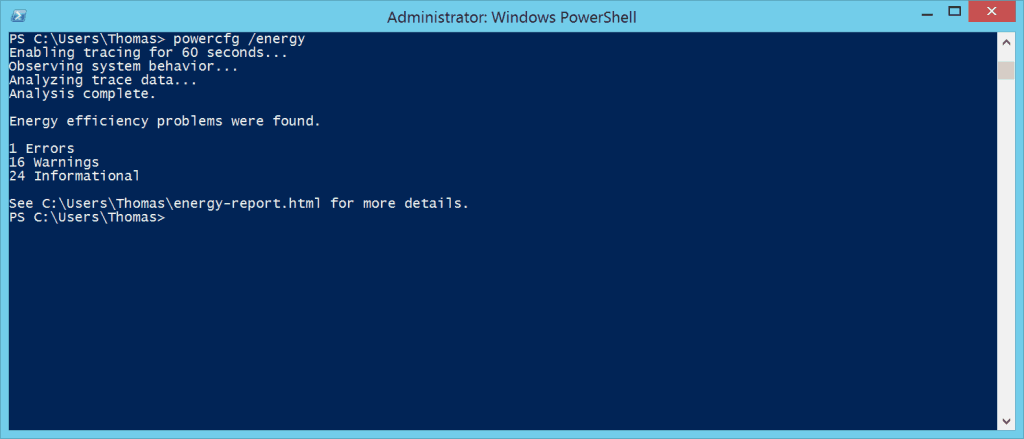
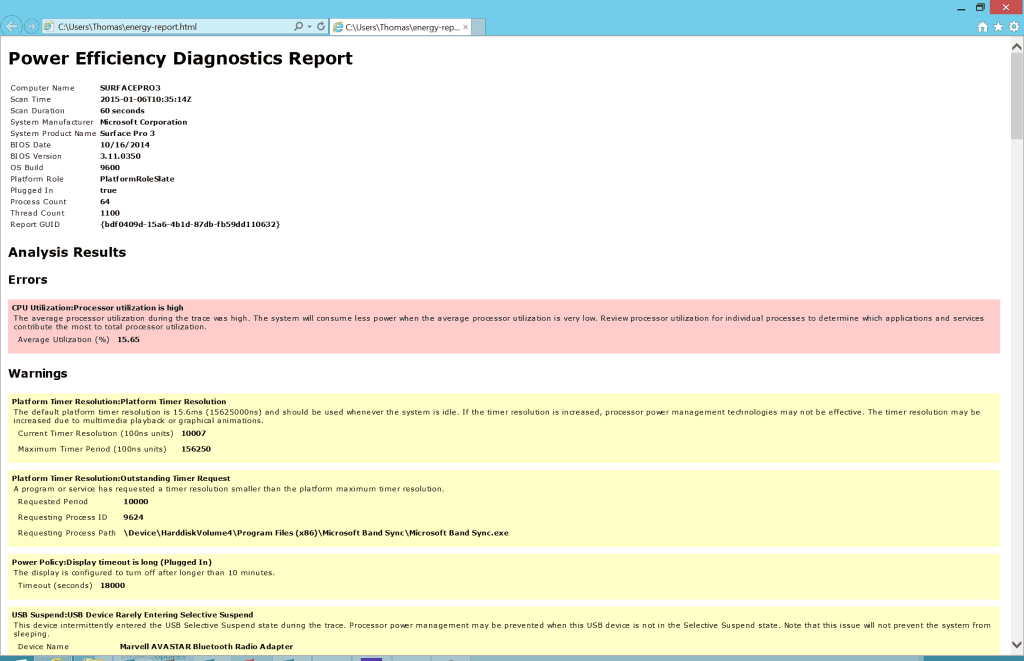











This was most helpful in debugging my recent “loss of sleep” problem on my Surface Pro 3 — after I recently installed Visual Studio 2015 including the new Android emulator, my “Sleep” option disappeared from the power options. It turns out the reason was that the Android emulator (as well as the Windows Phone emulator) both rely on Hyper-V technology and thus having the Hyper-V role installed.
Once that was installed, I lost the sleep function and any time the Surface tried to sleep, either manually (i.e. hitting the power button) or automatically (i.e. closing the lid), it did so unsuccessfully, and either tried to Hibernate or just shutdown completely.
This article along with some others (see below) helped to enlighten the issue — as soon as I removed the Hyper-V role, the Sleep option returned and so did my expected InstantOn behavior.
Other helpful resources:
* http://answers.microsoft.com/en-us/surface/wiki/surfpro3-surfnetwork/work-around-for-surface-pro-3-issue-where/bd7c8bde-439b-45d6-8d9d-2776913e45e9
* https://support.microsoft.com/en-us/kb/2973536
Thank you very much for this!
I kept trying to figure out why my InstantGo stopped working, replaced by a longer sleep…guess the hyperV installation for something I was working on. Really appreciate you taking the time on this article.